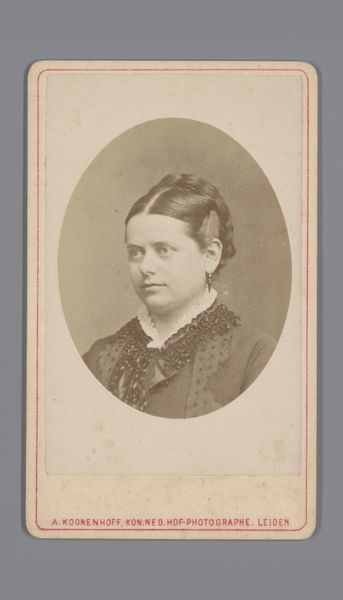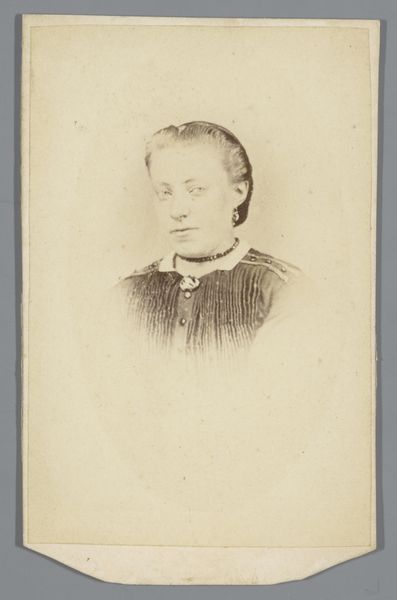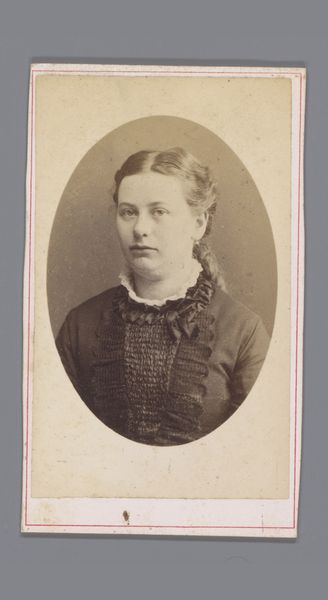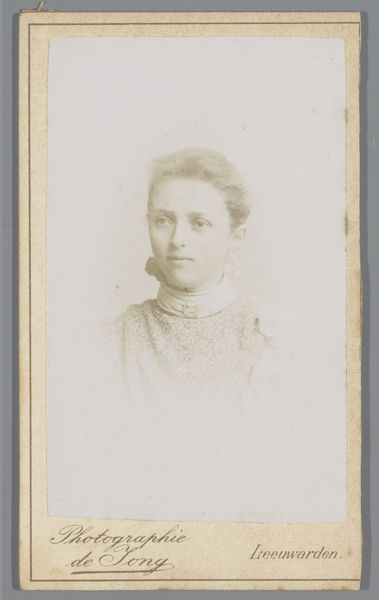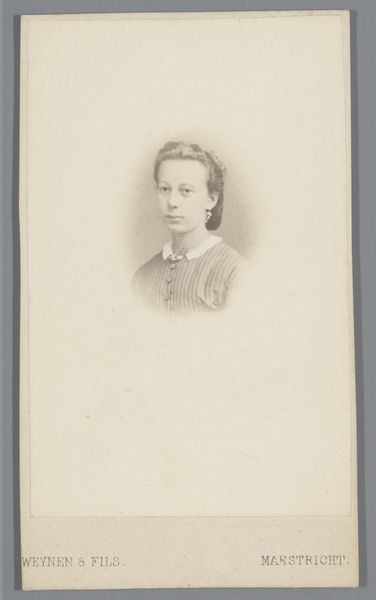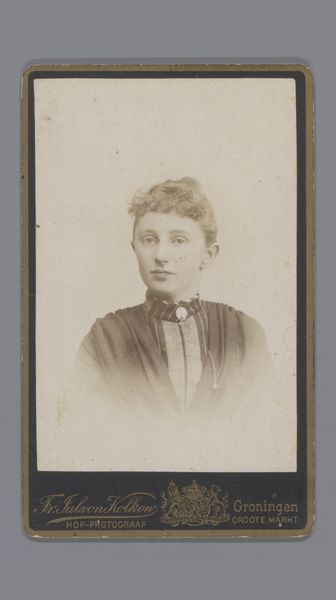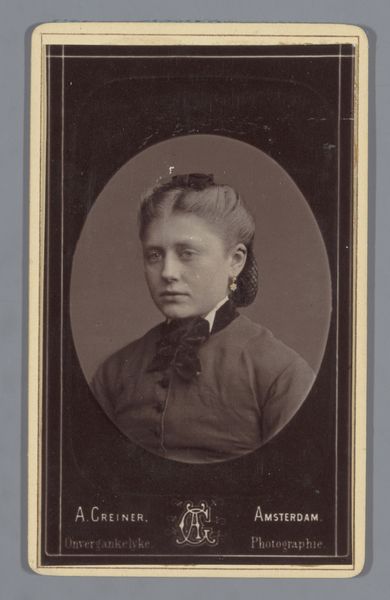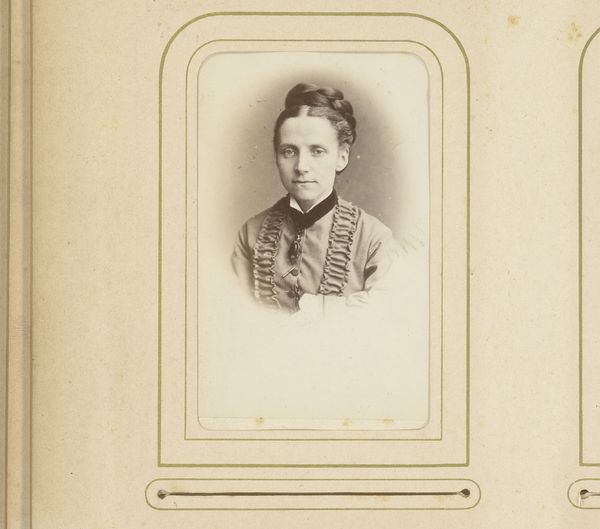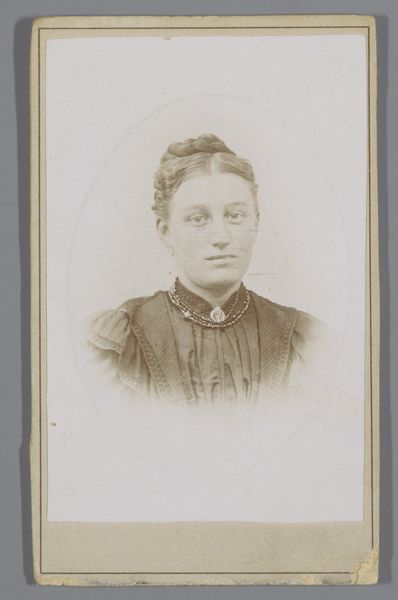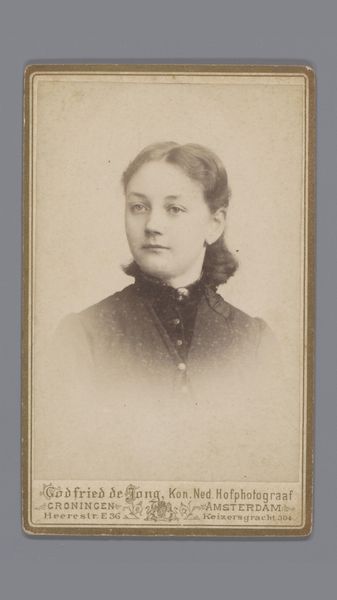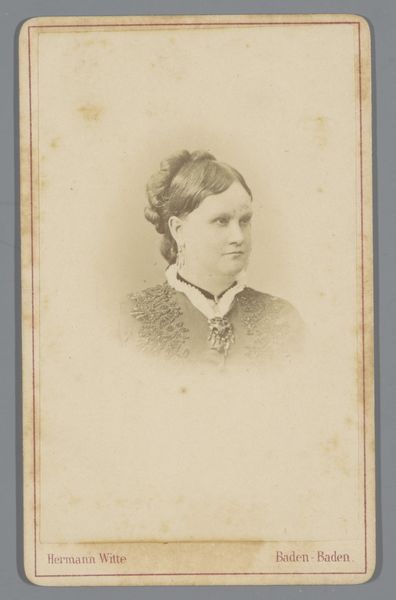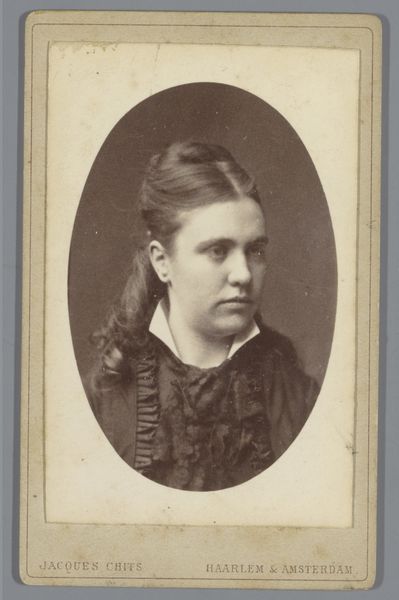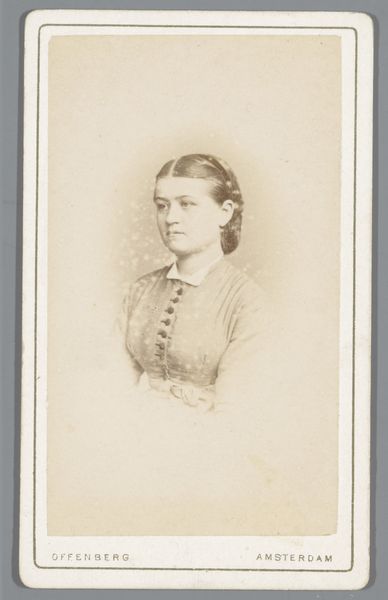
photography, albumen-print
#
portrait
#
photography
#
albumen-print
Dimensions: height 100 mm, width 63 mm
Copyright: Rijks Museum: Open Domain
Curator: This albumen print, created between 1892 and 1893 by Abraham Koorenhoff, offers a window into the life of Jet van de Boom Eschauzier. What strikes you about this portrait? Editor: Initially, the softness of the image creates an air of nostalgia. The oval composition, the muted sepia tones... it feels very classic, like a memory trying to hold on. Curator: It’s fascinating to consider the symbolism inherent in formal portraiture of this period. The tightly controlled pose, the ornate shawl—all convey a sense of respectability and carefully constructed identity. How do you interpret the use of such controlled presentation? Editor: Absolutely, and in that way the accessories are so revealing! Take the earrings, the detailing of the lace. There’s a subtle performance of wealth and status there, but not overly gaudy. A statement nonetheless, especially as photography was still establishing itself as a method for portraying not just appearance but the perceived truth of a person's essence. Curator: I think the context of photography’s evolving role during that period is critical. Early photography was inextricably linked with scientific positivism and imperialism. Think about how it captured the "truth" of faraway cultures, often to promote asymmetrical power dynamics. This portrait then serves as a microcosm, capturing bourgeois identity as shaped by cultural and political realities of the time. Editor: I'm drawn to her gaze. While direct, it's not challenging. There's a pensiveness; she’s an actor, as you say, in this presentation but perhaps one also considering herself from a remove. The lace, too, has an almost protective quality. As if warding off some unseen force. Curator: Do you think her expression can read against this social fabric? Do you detect resistance, perhaps? A quiet refusal of that period’s patriarchal gaze? Editor: I think we are tempted, understandably, to give it such readings. Her gaze is compelling and we so badly want a sense of interiority from figures frozen in these moments, to make a bridge across history to ourselves. But I suspect, too, that that may also be, perhaps, reading too much against history. Curator: These layers of analysis demonstrate the complex nature of images, their capacity to be both reflections and refractions of the world. Editor: Exactly! They echo across time and what we get back says so much about both the portrait and ourselves.
Comments
No comments
Be the first to comment and join the conversation on the ultimate creative platform.
